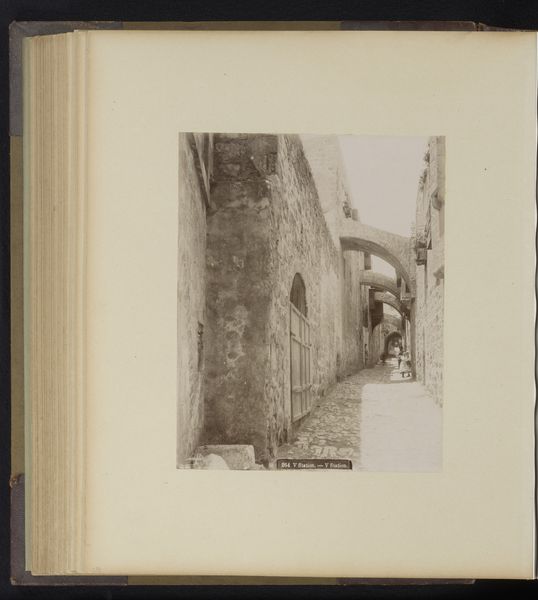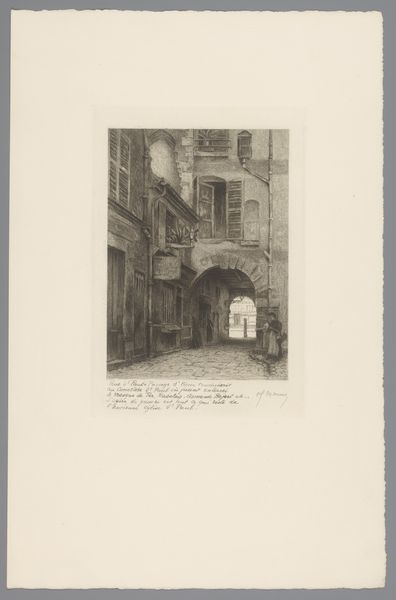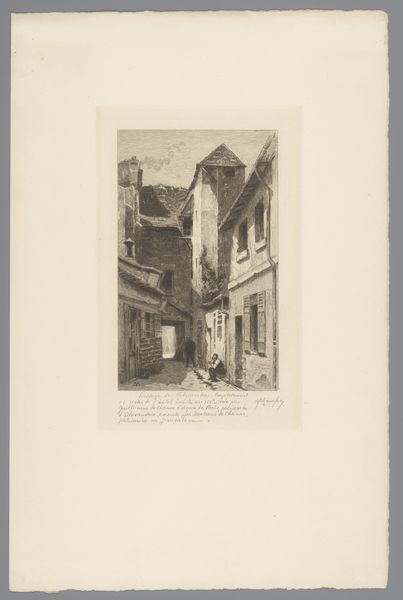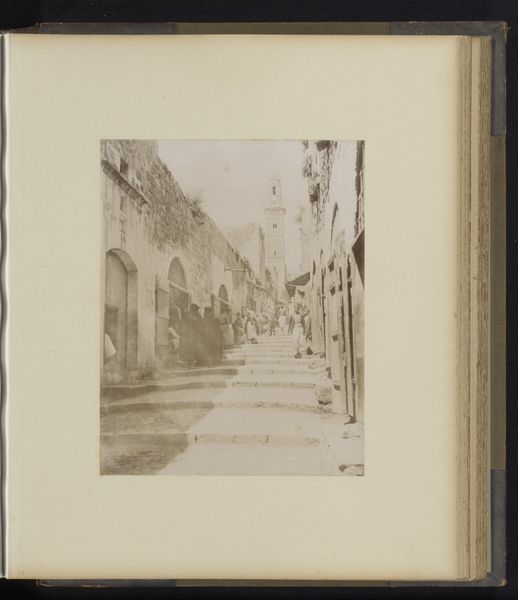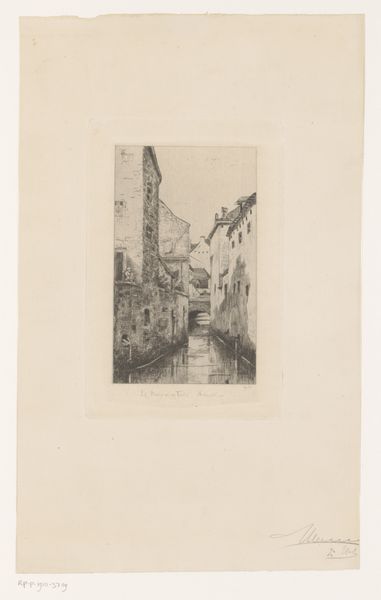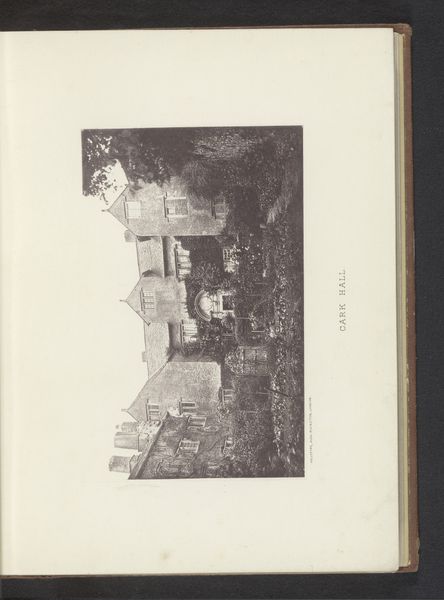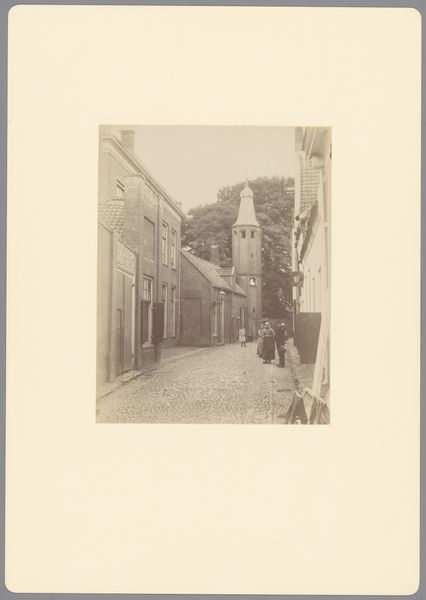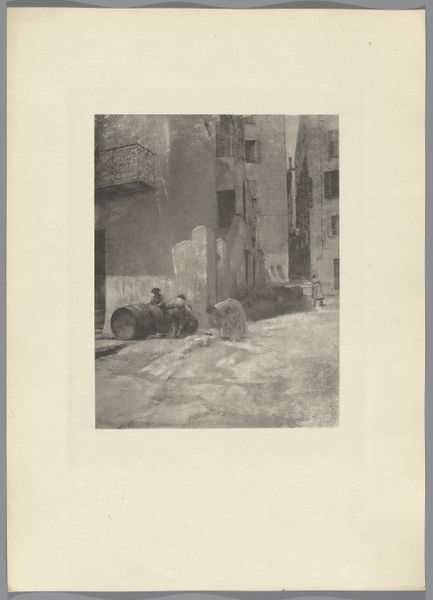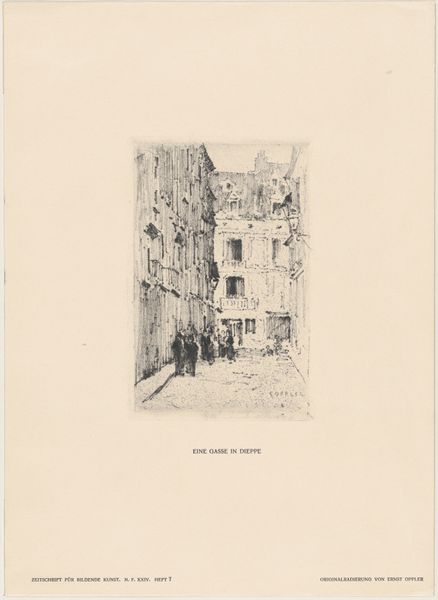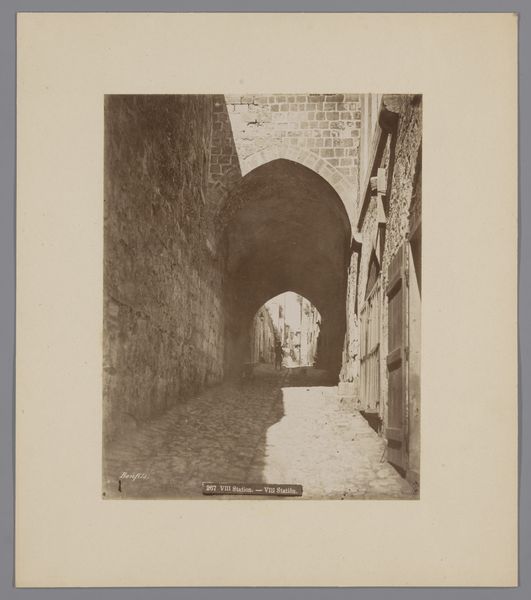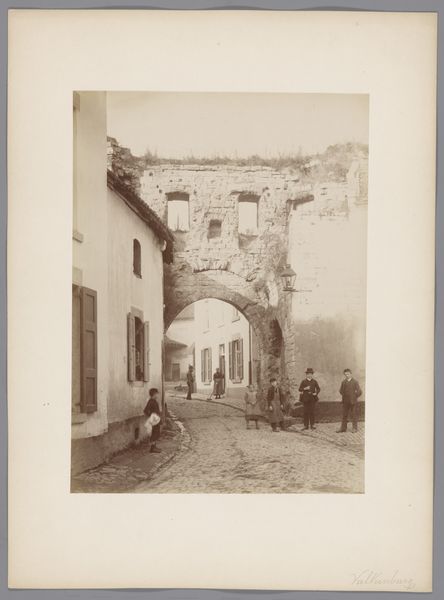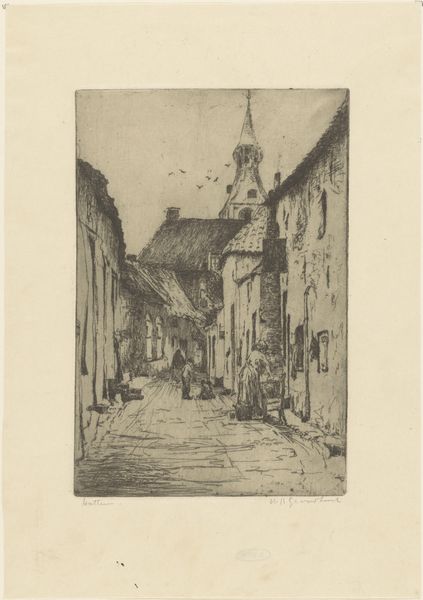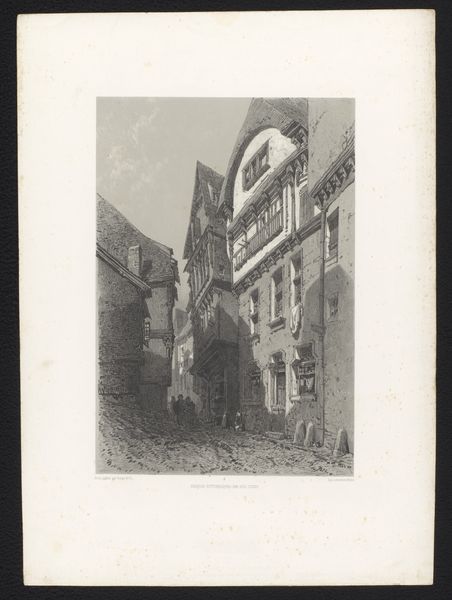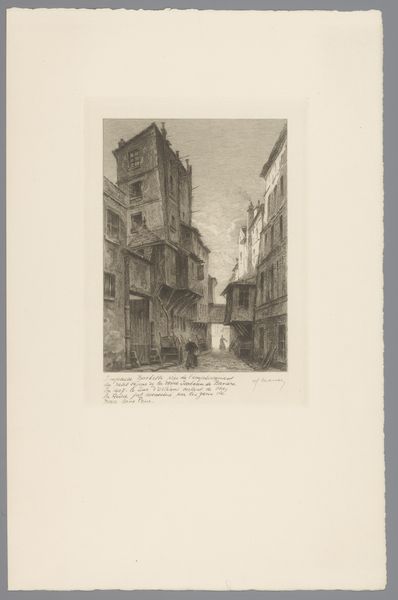
Dimensions: height 272 mm, width 203 mm
Copyright: Rijks Museum: Open Domain
Curator: Immediately, I am drawn in by this sense of intimacy—this etching renders a Parisian street in such a softly muted, yet utterly detailed, way. Editor: The material tells part of the story. This is "Gezicht op de rue Berton in Parijs" by Henri Manesse, probably created sometime between 1906 and 1911. It’s an etching, which means we're seeing an image transferred from a metal plate, meticulously worked and bitten by acid, then inked and pressed onto paper. The printmaking process, that's its own craft with roots going far back. Curator: Yes! There's something both transient and sturdy about how the impression captures this moment. It feels like wandering a little lost, but contentedly so. The soft grays and blacks make it like memory itself, maybe. Editor: The choice of etching allows for very fine lines, capturing details of the architecture but it also brings in labor – someone had to carefully prepare the plate, make the marks, control the acid. This wasn't mass-produced but still… part of the appeal of these kinds of images would've been its wider dissemination than a unique painting. To capture some idea or essence that would have greater reach… Curator: Oh, the lone figure there at the vanishing point really punctuates the whole scene—it's just a simple addition of form. It becomes much more about an encounter, this echo of self in a place. Does that make any sense at all? I just like thinking about who that little silhouette might be... Editor: It does indeed! I’m also thinking about Manesse and what brought him to that street; what other kinds of visual materials was he and were others consuming back then in order to build our modern experience of urban spaces? These seemingly straightforward pictures are rich archives on society itself. Curator: Considering all the details and process layers we've discussed... it feels right, more layered than flat. What you said before, about thinking about its distribution, its intended viewers at the time... that gives even greater dimensions to that simple little person. It transforms their experience; it connects them to those distant people across those streets—wonderful! Editor: Yes! Considering that all adds depth. Next time you see an etching or any print, let it speak about the labor, process, distribution – and ultimately to ourselves and that connection through craft and the material itself!
Comments
No comments
Be the first to comment and join the conversation on the ultimate creative platform.
